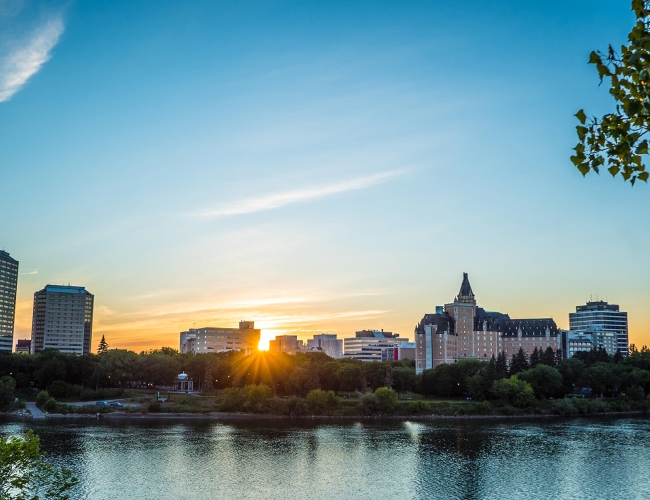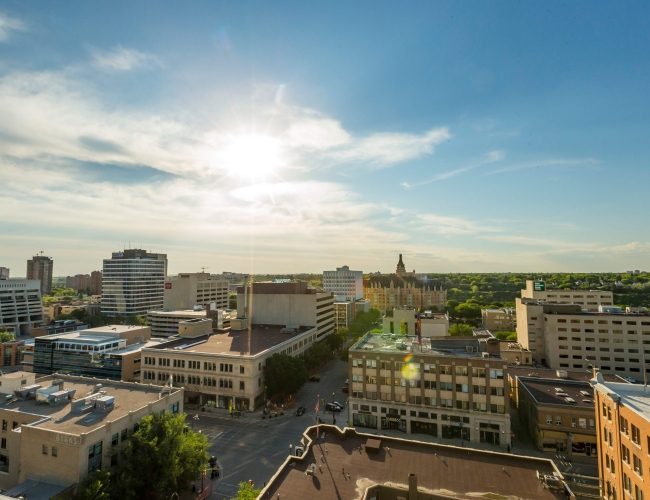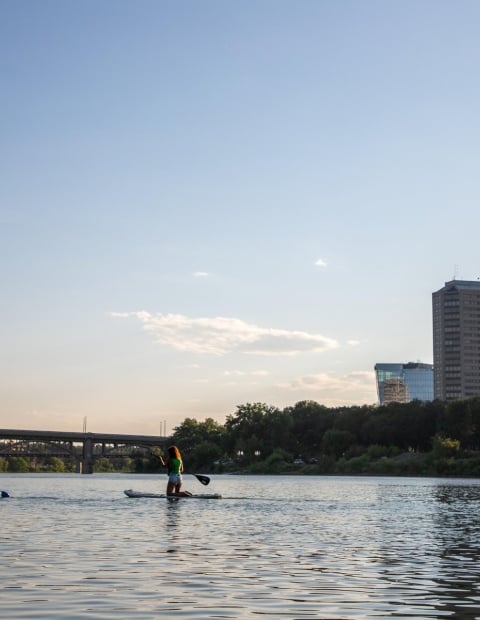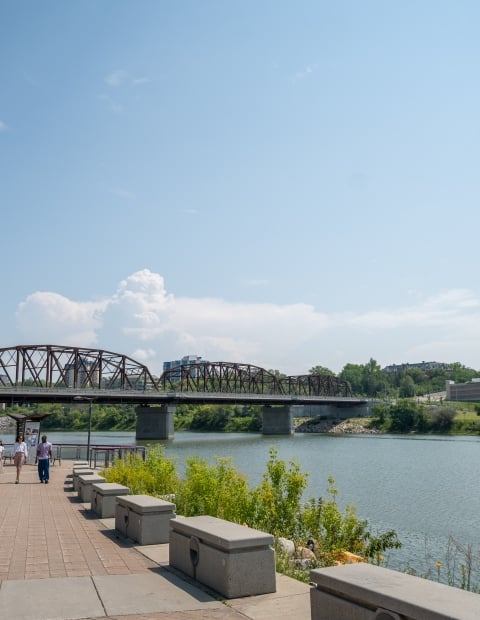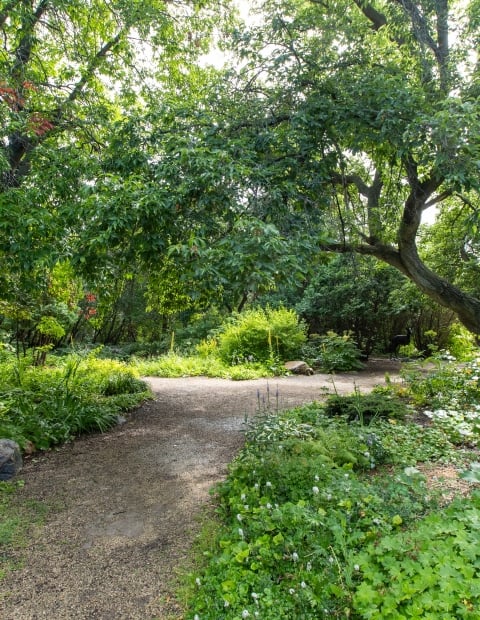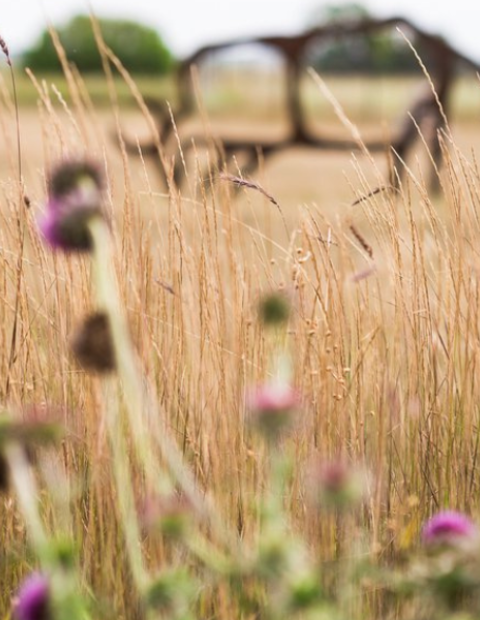
Why is Saskatoon Called the City of Bridges?
The most memorable of all of the city of Saskatoon’s infrastructure are the bridges that connect the city across the South Saskatchewan River. The origins of the nickname ‘City of Bridges’ can be traced back to newspaper articles from the 1920s and 30s. By the 1950s and 60s local companies had adopted the ‘bridge city’ moniker into their names and marketing materials (examples Bridge City Steel, Bridge City Finance, etc) and this phrase has since become ubiquitous with the city of Saskatoon. Read on for a bit of history about each of our bridges!
The Traffic Bridge, 1907

Photo via the City of Saskatoon Archives
Prior to the 1907 construction of the Traffic Bridge, people would cross the river via ferry or on foot using a railway bridge (circa 1890 at the location of today’s Senator Sidney L. Buckwold Bridge). This was a risky endeavor since there was no pedestrian section on the railway bridge! When Nutana joined the City of Saskatoon construction of the bridge was part of the agreement to facilitate easier access across the river. The original structure was closed in 2010 due to public safety concerns and a new steel truss bridge of similar appearance was opened in its place in 2018.
Fun fact: The Traffic Bridge is the site of Saskatoon’s only maritime disaster! In 1908 the S.S. City of Medicine Hat steamship crashed into one of the concrete piers and sank.
The University Bridge, 1916
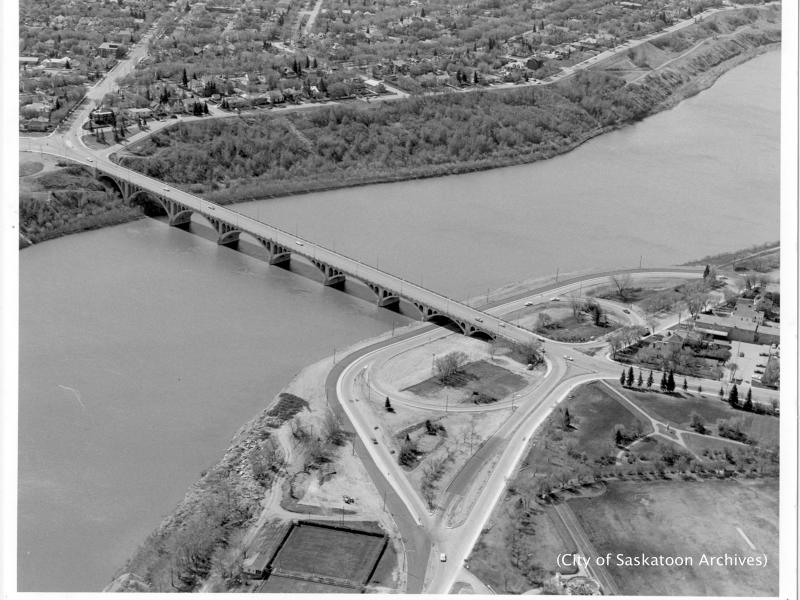
Photo via the City of Saskatoon Archives
This bridge was constructed in 1916 and was known for much of its lifetime as the 25th Street Bridge until 2006 when it was officially named the University Bridge. The structure was built with descending arches to resemble a stone skipping across the water and it was an important link for the University of Saskatchewan and the Sutherland neighbourhood to downtown Saskatoon. The bridge had deteriorated so badly in the 1960s that the City Council voted to demolish the existing structure and build a new one. However, the cost of building a new bridge well exceeded the cost of repairing the existing structure so it was saved from demolition.
Fun fact: The bridge was originally constructed with streetcar rail tracks on it, these were never used and later removed in the 1940s.
The Spadina Crescent Bridge, 1930
Though this bridge does not cross the South Saskatchewan River, it is still noted as one of Saskatoon's 8 bridges that the city maintains. The structure is Saskatoon’s smallest bridge and crosses a ravine that runs between Kinsmen Park and City Hospital. It was constructed to replace a previous wooden bridge as a relief work project during the Depression.
Fun fact: When the bridge was originally constructed it was part of a beautifying project that included a series of ponds which have since been filled in.
The Broadway Bridge, 1932
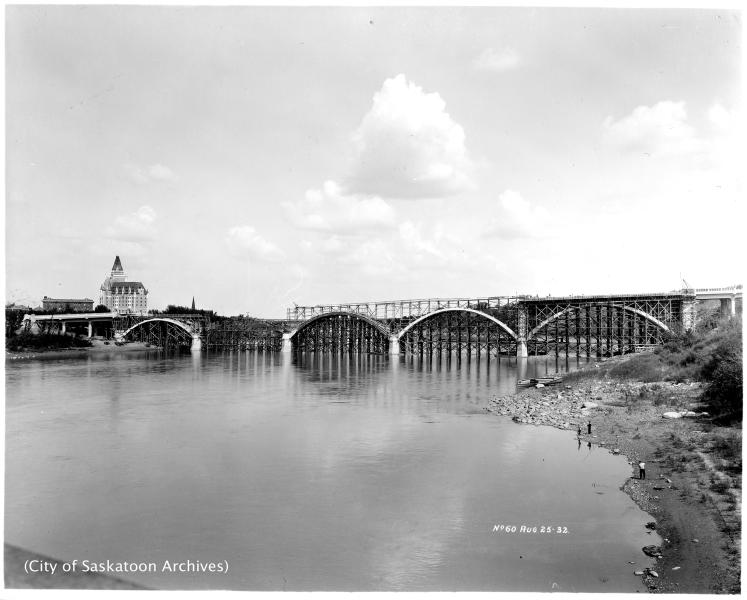
Photo via the City of Saskatoon Archives
The Broadway Bridge was built during the Depression and most of the work was done by hand to employ as many men as possible. Only family men were employed and 1,593 of them worked around the clock on the bridge’s construction. The bridge was completed in 11 months and streetcar lines were rerouted onto the Broadway Bridge from the much narrower Traffic Bridge in 1933.
Fun fact: The bridge has a grade of 4%, the steepest grade of all of Sasaktoon’s bridges.
The Senator Sidney L. Buckwold Bridge, 1966
Originally named for the Idylwyld Freeway, of which it is part of, this bridge was renamed to the Senator Sidney L. Buckwold Bridge in 2001 to honour the Mayor of Saskatoon at the time of the bridge’s construction. The bridge is located at the site of the city’s first railway bridge (circa 1890) that was demolished in 1964 when the rail line was relocated.
Fun fact: The Senator Sidney L. Buckwold Bridge is located at the narrowest point of the South Saskatchewan River within the city and is only 183 meters long.
The Circle Drive Bridge, 1983
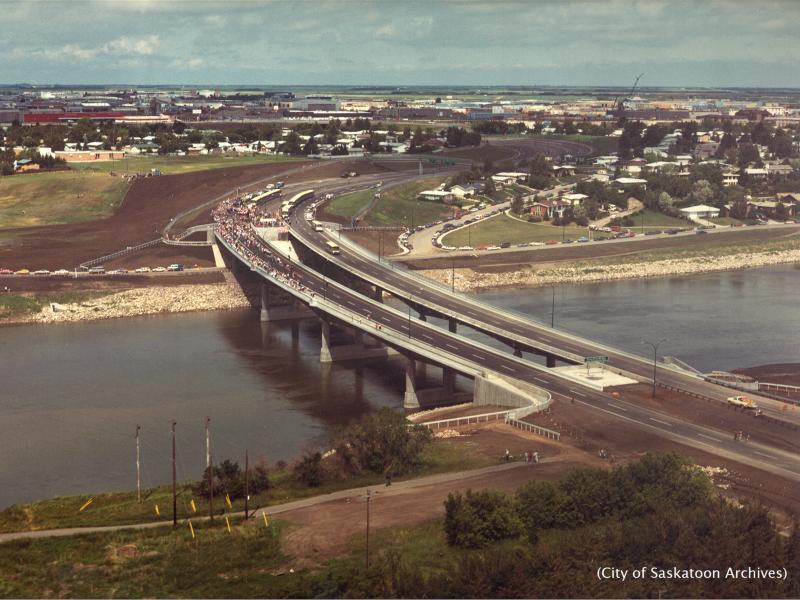
Photo via the City of Saskatoon Archives
As the city expanded the Circle Drive Bridge was constructed to connect the north neighbourhoods with the south and east parts of the city, bypassing the need to drive through Saskatoon’s downtown.
Fun fact: The central pedestrian walkway was added to this bridge in 2007 as part of the bridge expansion project that added two additional traffic lanes to the bridge.
The Gordie Howe Bridge, 2013
The construction of this bridge reduced commuter times in the city and congestion on the Senator Sidney L. Buckwold Bridge, especially during rush hour. Originally called the Circle Drive South Bridge, the bridge was declared the Gordie Howe Bridge in 2016, following the hockey legend’s death earlier that year.
Fun fact: The construction of the Gordie Howe Bridge completed the vision of the city’s Circle Drive, an encircling freeway that was included in a 1913 “Plan of Greater Saskatoon” map drawn by the city commissioner of the time.
The Chief Mistawasis Bridge, 2018
The most recent bridge to be constructed within the city is the Chief Mistawasis Bridge that connects the north industrial area with east neighbourhoods of the city. The bridge is named after Chief Mistawasis who was head of the Prairie Tribe and who signed Treaty 6 in 1876. The bridge was previously referred to as the ‘North Commuter Parkway Bridge’.
Fun fact: The ‘Chief Mistawasis Bridge’ name was revealed at the 2018 National Indigenous Peoples Day event held in the city of Saskatoon.
Exploring Saskatoon’s Bridges via the Meewasin Trail

Photo via the City of Saskatoon Archives
City residents and visitors love to take in the city’s riverbank in all four seasons. The Meewasin Trail system connects all the bridges throughout the city and has many vantage points for enjoying our city’s iconic infrastructure. Some favorite viewpoints along the trail include views of the Circle Drive South Bridge from the South West Trail, views of the Senator Sidney L. Buckwold Bridge and the Traffic Bridge from River Landing, and views of the Broadway Bridge from Cosmopolitan Park. Maps of the Meewasin Trail are available online or at their office in downtown Saskatoon.
There are details at some of the bridges worth noting including a historical plaque beneath the Traffic Bridge, murals under the Senator Sidney L. Buckwold Bridge, walkways beneath the Circle Drive and Gordie Howe Bridges, and the 1952 Pioneer Memorial Cairn at the top of the Broadway Bridge. If you look closely under either the University or Broadway Bridges you can even see the outlines of the individual boards that made up the wooden forms used to pour the concrete.
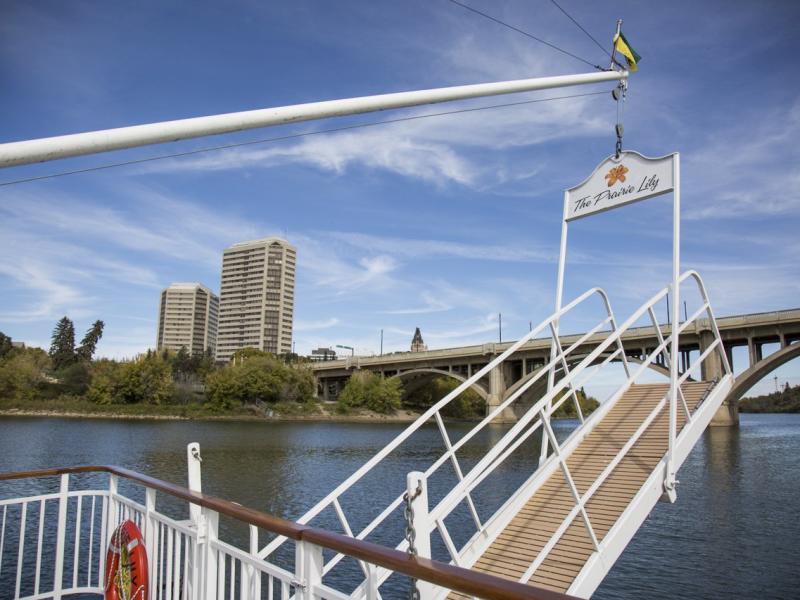
Photo via the City of Saskatoon Archives
Insider Tip: During the summer months a unique way to enjoy the city’s bridges is from the river itself! Take a riverboat tour aboard the Prairie Lily whose route travels under the University, Broadway, Traffic, and Senator Sidney L. Buckwold Bridges and experience these structures from the water of the South Saskatchewan River.
